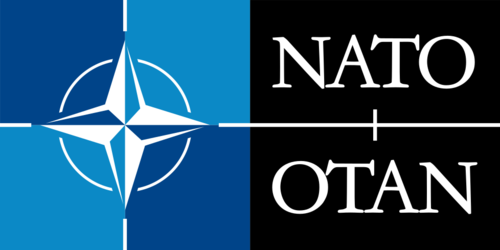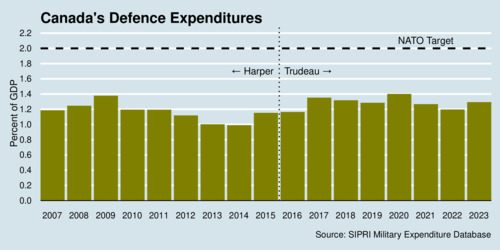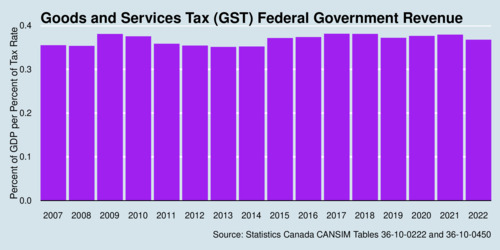The North Atlantic Treaty Organization (NATO) marked its 75th anniversary this year. Founded in 1949, it has grown from 12 to 32 members, working to protect Western democracies against all threats. Fundamentally, NATO countries are bound together by shared values of democracy, human rights, the rule of law, and individual liberty. Canada's soldiers contribute their part to this shared responsibility. Having been a NATO soldier myself, I take pride in all the hard and dilligent work that our armed forces provide in order to protect our country and our allies.

As Ukraine is fighting for its right to exist as a democracy and an independent state, and courageous Ukranian soldiers are fighting the Russian invaders, Western countries are providing continued support. Canada has responded by providing military gear, and has also contributed economic, humanitarian, and development assistance. Russia's invasion of Ukraine has upended past thinking on defence. Western countries need to be fully prepared for miltary aggression in other potential warfare theatres.
Yet, Canada's defence spending has not kept up with the new challenges as successive governments hoped that there was a post-Cold-War "peace dividend". Military spending has not been a priority for decades. As the chart below shows, military spending has fallen significantly short of the 2-percent target that NATO has set. Politically, neither Conservatives nor Liberals can escape the fact that they have had other spending priorities.

click on image for high-resolution PDF version
The defence spending gap has received much attention in the news media in recent months. Our political parties are well aware of the need to invest in our armed forces, and the federal government of Canada announced a renewed vision for Canada's defence. Procurement for military hardware is not trivial, as capabilities evolve and needs change. In May of this year, 23 senators (both Democrat and Republican) wrote to Prime Minister Trudeau, urging to increase military spending.
The latest figures from the Stockholm International Peace Research Institute (SIPRI) put Canada's spending at 1.29% of GDP in 2023. (Official NATO figures released in June show a 1.37% of GDP estimate for 2024. Based on the NATO target of 2 percent of Gross Domestic Product (GDP) for defence spending, Canada's defence spending gap is roughly 0.7 percent of GDP. This is not a trivial amount of money, as is easy to guess.
What would it actually take to close the defence spending gap if it was closed through additional revenue rather than higher debt or lower expenditures elsewhere? Politicians have still not made it clear where such funds would come from. For this reason it is useful to engage in a thought experiment and take a form of taxation that all Canadians are completely familiar with: the Goods and Services Tax (GST). The federal GST is currently at 5 percent (and in provinces that have the Harmonized Sales Tax, it is the federal component).
The diagram below shows that the GST revenue is actually remarkably steady over time as a percentage of GDP. The bars for each calendar year show the revenue as percent of GDP per percentage point of the GST rate. This normalization accounts for changes in the GST rate, which was 6% between July 2006 and December 2007, and 7% between January 1991 and June 2006. The average over the last sixteen years has been 0.3676 percent of GDP per percentage point of GST. In 2022, the federal government collected $51.7 billion in GST at the 5% rate, with a nominal GDP of $2,813.3 billion. Official defence budget spending was reported as $25.145 billion (0.89% of GDP), with another $4.148 billion (0.15% of GDP) for veterans' benefits. Additional spending makes up the remaining 0.18% of GDP.

click on image for high-resolution PDF version
‘Financing Canada's defence spending gap is tantamount to a 1.9 percent-point increase in the GST rate.’
Canada's defence gap, using the latest SIPRI data, shows a defence spending gap of 0.7 percent of GDP. That is, roughly put, a $20 billion gap. Using the data from the table above, dividing 0.7 percent of GDP by the average 0.3676 GDP percent per GST percentage point gives us 1.9 GST percentage points. In other words, to fully fund the defence spending gap, the federal government would need to roughly bring back the GST rate to where it was before 2006: at 7%. Which federal government, Liberal or Conservative, is willing to put this truth before the electorate? Defence spending, after all, is a long-term commitment. The simple truth is that beefing up defence will cost all of us, every day. There is no free lunch when it comes to defence.
Canada is not alone in failing to reach NATO's two-percent target. Canada is fifth-last among the 32 member countries. Canada's equipment expenditure as a share of defence expenditure is even worse. The NATO guideline calls for a minimum of 20%, and only Canada and Belgium fall below. Most countries have now achieved around 30%. Roughly put, Canada's defence expenditures break down to 43.5% personnel costs, 11.9% operations and maintenance, 3.4% infrastructure, and 18.6% for major equipment. The US military spends about a quarter on personnel, 30% on major equipment, and 43% on operations and maintenance.
Canada's armed forces should be ready to defend our country and our allies. And for this our armed forces need to be equipped with state-of-the-art equipment. Ukraine's suffering at the hands of an aggressor who does not shy away from war crimes (including a recent bombing of a children's hospital in Kyiv) has been a wake-up call to all of us. Canada needs to step up to meet the military challenges of our time.
Threats to NATO come not only from external adversaries. At the core of NATO membership is the steadfast commitment to mutual defense. A panel of experts was polled recently by the magazine Foreign Affairs; they were asked to look at the implications for NATO of a potential second Trump term that may embrace even greater isolationist tendencies than during his first term. Reading these experts' opinions has not eased my worries. Regardless of who occupies the White House in 2025, Canada needs to do its part to strengthen NATO.
- SIPRI Military Expenditure Database, Stockholm International Peace Research Institute [DOI: 10.55163/CQGC9685].
- NATO Home Page
- NATO: Defence Expenditure of NATO Countries (2014-2024), Press Release, June 2024.
- Murray Brewster: Federal budget's funding boost for defence spread out over multiple years, CBC News, April 16, 2024.
- Christian Paas-Lang: It's time for Canada to 'step up' on military spending, U.S. senator says, CBC News, May 26, 2024.
- Will the NATO Alliance Survive a Second Term of Donald Trump?, Foreing Affairs, July 9, 2024.
![[Sauder School of Business]](logo-ubc-sauder-2016.png)
![[The University of British Columbia]](logo-ubc-2016.png)